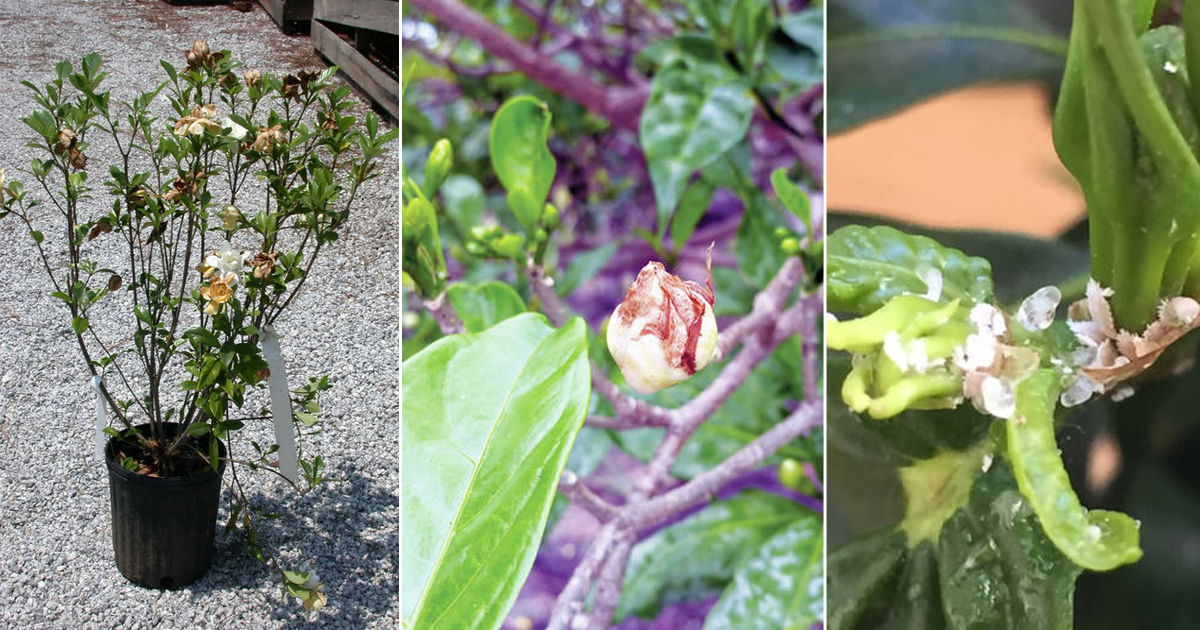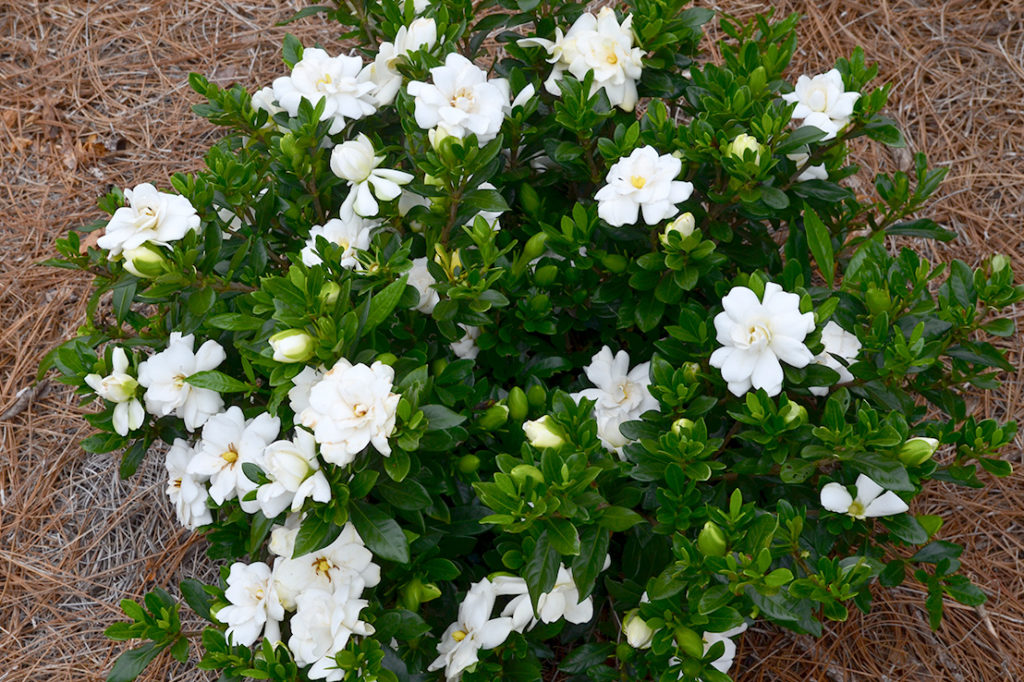Gardenias are beloved for their stunning white flowers and intoxicating fragrance, but when the buds of these beautiful plants start turning brown, it can be alarming for gardeners. Understanding the causes of gardenia buds turning brown is crucial for maintaining the health of this cherished shrub. In this comprehensive guide, we will explore the reasons behind this issue, how to prevent it, and the steps you can take to help your gardenia thrive. 🌼
Understanding Gardenia Buds
Gardenias are evergreen shrubs that are part of the Rubiaceae family. Known for their glossy, dark green leaves and creamy white blossoms, they require specific care to flourish. The buds of gardenias are crucial for producing these beautiful flowers, and any changes in their health can signal underlying problems.
Common Characteristics of Gardenia Buds
- Appearance: Gardenia buds are typically firm and green, gradually maturing into white blooms.
- Fragrance: The scent of gardenias is one of their most appealing traits, attracting pollinators and delighting gardeners.
- Lifecycle: Gardenia buds develop from flower clusters, which may take time to bloom fully.
Why Are Your Gardenia Buds Turning Brown?
There are several reasons why gardenia buds may turn brown, ranging from environmental stresses to disease. Understanding these factors will help you address the issue effectively. Here’s a detailed breakdown:
1. Environmental Stress

Environmental stress is one of the primary reasons behind the browning of gardenia buds. Factors such as temperature fluctuations, humidity levels, and light exposure can significantly affect the health of gardenias.
Temperature Extremes
Gardenias thrive in warm climates but can suffer when exposed to extreme temperatures. Here are some common temperature-related issues:
| Temperature Condition | Effect on Gardenia |
|---|---|
| Below 15°F (-9°C) | Brown buds and leaf drop |
| Above 90°F (32°C) | Fading blooms and stress |
Humidity Levels
Gardenias prefer high humidity levels. When humidity is too low, the buds may dry out and turn brown. This is especially common in dry climates or during the winter months when indoor heating can reduce humidity levels. 💧
2. Improper Watering
Watering is crucial for the health of gardenia plants. Both overwatering and underwatering can lead to brown buds.
Overwatering
Too much water can lead to root rot, which deprives the plant of necessary nutrients and oxygen. Symptoms include:
- Brown, mushy buds
- Yellowing leaves
- Wilting despite wet soil
Underwatering
Conversely, underwatering can cause the plant to become stressed, leading to browning buds as well. Signs of underwatering include:
- Dry, brittle leaves
- Soil pulling away from the pot
- Brown, crispy buds
Remember: Consistent moisture is key to keeping gardenias healthy. Aim for well-draining soil that stays evenly moist but not soggy.
3. Nutrient Deficiencies
Gardenias are sensitive to nutrient levels in the soil. A deficiency in essential nutrients can lead to poor bud development and browning. Here are some nutrients to consider:
- Iron: A lack of iron can cause yellowing leaves and affect bud growth.
- Magnesium: Insufficient magnesium can lead to browning buds and poor overall health.
4. Pests and Diseases
Pests and diseases can also play a significant role in causing gardenia buds to turn brown. Common culprits include:
Common Pests
- Aphids: These small insects suck sap from the buds, leading to browning.
- Spider mites: They can create webbing on plants and cause damage to the buds.
Diseases
Fungal infections and bacterial diseases can also impact the health of gardenias. Signs of disease may include:
- Brown spots on leaves and buds
- Leaf drop and wilting
Keep a close eye on your gardenias for any signs of pests or diseases. Early intervention is crucial for preventing severe damage.
How to Prevent Gardenia Buds from Turning Brown: Gardenia Buds Turning Brown

Prevention is always better than cure. Here are some steps you can take to protect your gardenias and prevent browning buds:
1. Maintain Ideal Growing Conditions
Ensure your gardenias are planted in a location that provides the right temperature and humidity levels. Ideally, they should be in:
- Full sun to partial shade: Too much direct sunlight can stress them, while too much shade can hinder blooming.
- Protected area: Shield them from strong winds and extreme temperatures.
2. Proper Watering Techniques
Develop a regular watering schedule. Check the soil moisture regularly and water when the top inch of soil feels dry. Avoid letting the soil stay soggy for prolonged periods.
3. Fertilization
Use a balanced fertilizer designed for acid-loving plants. Look for one that contains essential nutrients like nitrogen, phosphorus, potassium, iron, and magnesium. Fertilize in early spring and again in mid-summer for best results.
4. Pest Control
Regularly inspect your gardenias for pests. If you spot any, treat them promptly with insecticidal soap or neem oil. 🌱
5. Disease Management, Gardenia Buds Turning Brown
Practice good hygiene in your garden by removing any fallen leaves and debris around the base of your plants. Ensure proper air circulation to minimize humidity around the plants, helping to prevent fungal infections.
When to Seek Professional Help
Sometimes, despite your best efforts, gardenia buds may continue to turn brown. If you find that your attempts to remedy the situation are not successful, it may be time to consult a professional. Here are some signs that it’s time to seek help:
- Persistent browning despite optimal care
- Severe pest infestations
- Unidentified disease symptoms
Conclusion
Gardenias are stunning plants that can bring beauty and fragrance to any garden. By understanding the causes behind brown buds and taking proactive steps to mitigate these issues, you can help your gardenias flourish. Remember to maintain ideal growing conditions, water appropriately, and keep an eye out for pests and diseases. With the right care, your gardenia plants can continue to thrive and produce those lovely blooms that we all cherish. 🌸
